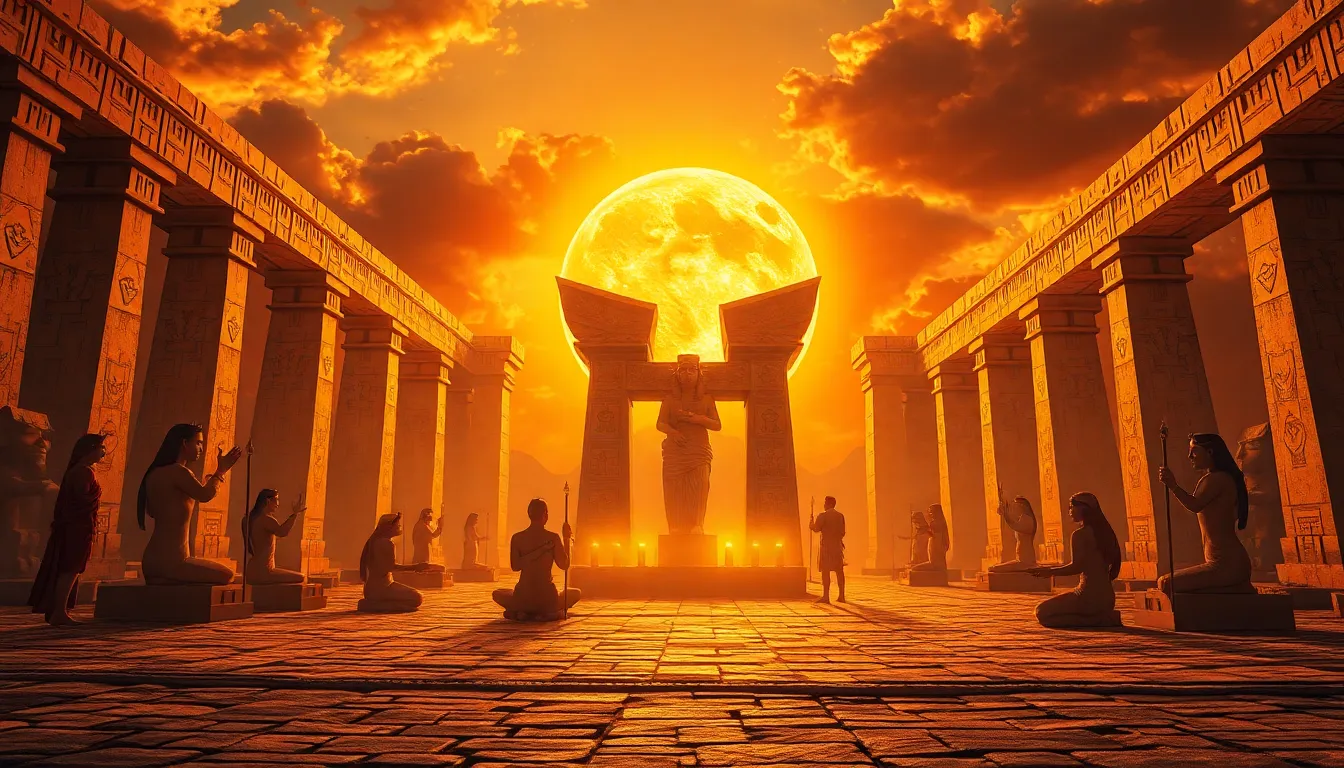The Rituals of the Festival of the Great Sun
I. Introduction
The Festival of the Great Sun, a vibrant celebration deeply rooted in ancient Egyptian culture, honors the sun deity Ra and the life-giving power of the sun. This festival is not only a time of joy and community but also serves as a spiritual observance that emphasizes the connection between humanity and the divine. Throughout history, the festival has played a pivotal role in the lives of the ancient Egyptians, marking significant seasonal changes and agricultural cycles.
The significance of the festival extends beyond mere celebration; it embodies the cultural and spiritual essence of ancient Egyptian society. By examining the rituals associated with the Festival of the Great Sun, we can gain insight into the values, beliefs, and practices that shaped the lives of the ancient Egyptians. This article aims to explore the rich history, preparations, key rituals, and the evolving nature of this festival, as well as its impact on contemporary society.
II. Historical Background
The origins of the Festival of the Great Sun can be traced back to the earliest days of ancient Egyptian civilization. It was believed that the sun was a vital source of life, and rituals surrounding its worship were integral to the culture. The festival evolved over centuries, influenced by various dynasties and regional practices.
As Egypt encountered other cultures through trade and conquest, elements from neighboring civilizations were integrated into the festival. For instance:
- The incorporation of offerings from Nubian and Libyan traditions.
- Influences from Greek and Roman customs, particularly during the Hellenistic period.
- Adoption of new musical styles and instruments that enriched the festival’s performances.
III. Preparations Leading Up to the Festival
In the weeks leading up to the Festival of the Great Sun, communities would engage in various preparations that involved both practical and spiritual elements. This collective effort fostered a sense of unity among participants.
One of the central aspects of preparation was ritualistic cleansing and purification practices. These rituals were believed to cleanse the spirit and prepare the participants for divine interaction. Common practices included:
- Bathing in sacred waters, symbolizing purification.
- Fasting or abstaining from certain foods to attain spiritual clarity.
Additionally, symbolic decorations and altars were created in homes and public spaces. Brightly colored fabrics, representations of the sun, and offerings of flowers and fruit adorned these altars, creating an atmosphere of celebration and reverence.
IV. Key Rituals of the Festival
A. Opening Ceremony
The festival typically commenced with an opening ceremony, marking the first gathering of the community. This ceremony held significant importance as it set the tone for the festivities. Ritual speeches and prayers were offered to honor Ra and invoke his blessings for the coming year.
B. Offerings to the Sun
Offerings to the sun were a vital component of the festival, reflecting the ancient Egyptians’ gratitude for the life-sustaining warmth and light provided by Ra. The types of offerings varied, but they often included:
- Fresh fruits and vegetables, symbolizing the harvest.
- Loaves of bread and beer, staples of the Egyptian diet.
- Animal sacrifices, typically goats or birds, to beseech favor from the gods.
Traditional foods prepared specifically for the festival held special meanings and were often shared among the community to strengthen bonds and celebrate abundance.
V. Dance and Music Traditions
Dance and music played a crucial role in the Festival of the Great Sun, serving as expressions of joy and reverence. The rhythm and movement were believed to invoke the presence of the divine and enhance the spiritual atmosphere of the festival.
Various traditional musical instruments were utilized, including:
- Harps and lyres, which produced melodic tunes.
- Drums that provided a strong rhythmic foundation.
- Flutes and rattles, adding layers of sound to the celebrations.
The dances performed during the festival varied in style but were characterized by their energetic movements and symbolic gestures, representing the sun’s journey across the sky. These performances not only entertained but also served to narrate the myths and legends associated with the sun god Ra.
VI. Community and Unity
The Festival of the Great Sun served as a powerful means of fostering community bonds. It brought together individuals from various social backgrounds, encouraging participation across age groups and generations. Elders shared stories and legends, imparting cultural wisdom to the younger generations.
Intergenerational participation was common during the festival, as families came together to honor their shared heritage. This collective experience reinforced social ties and created a sense of belonging within the community.
VII. Impact of Modernity on the Festival
As the world has become increasingly globalized, the Festival of the Great Sun has experienced changes in its rituals and practices. Some of these changes include:
- Incorporation of modern elements such as technology in performances and celebrations.
- Adaptation of traditional rituals to fit contemporary lifestyles.
- Increased awareness and participation from tourists and outsiders, leading to a blend of cultural exchanges.
Despite these changes, many communities strive to preserve traditional practices, ensuring that the essence of the festival remains intact.
VIII. Conclusion
In reflecting on the importance of the Festival of the Great Sun, it becomes clear that this celebration is much more than an ancient ritual; it is a profound expression of cultural identity and spiritual connection. The rituals associated with the festival serve to maintain the cultural heritage of the ancient Egyptians while fostering a sense of unity and belonging among participants.
As we look to the future, it is essential to recognize the role of these rituals in preserving cultural identity and to encourage participation in future celebrations. By honoring the past while embracing the present, we can ensure that the Festival of the Great Sun continues to shine brightly for generations to come.




